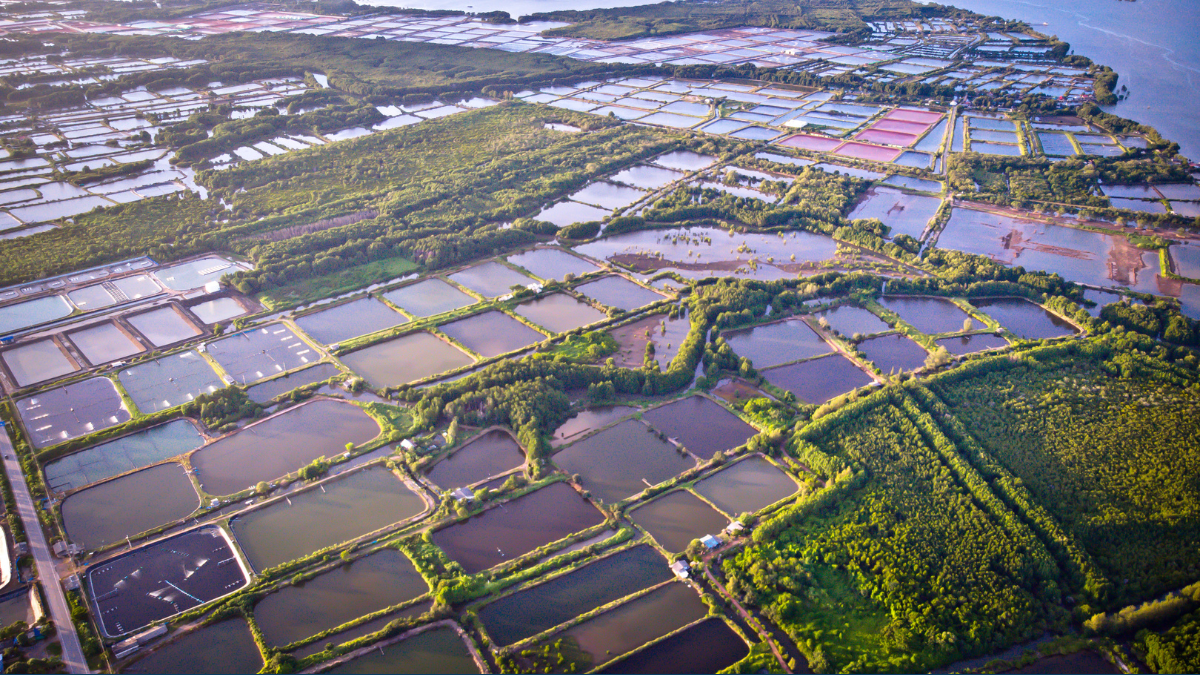Given that ‘greener farming’ pressures are ramping up and certainly not going anywhere, Adam Hanratty, Area Sales Manager at KEENAN, talks about how farmers can turn that business pressure, into a business positive.
The whole world has eyes on the intensifying sustainability crisis. Moves to mitigate and reverse the degeneration of the planets’ natural resources are on the up.
The Climate Target Plan is targeting Europe to cut greenhouse gas (GHG) emissions by at least 55% by 2030, and reach a carbon neutral status by 2050.
- A quick synopsis of U.K. sustainable farming schemes
- The impact of forages and feeds on methane footprints
- How ration presentation can reduce methane footprints
- How InTouch enables feeding accuracy

Greenhouse gas emissions in the UK. Source: NFU
Whilst a relatively low contributor of total GHG emissions in Europe compared to residential, business, energy and transport, agriculture holds the key to a Planet of Plenty™. Contrary to a far too commonly held belief, we at KEENAN and Alltech firmly believe that agriculture has the greatest potential to positively shape the future of our planet.

In fact, the European Commission reported that agricultural GHG emissions in Europe dropped by 19 percent between 1990 and 2017. So we’ve already been doing our bit for many years. And as things stand, U.K. funding schemes are set to reward continued improvements.
A quick synopsis of U.K. sustainable farming schemes
The fact that we are in our last year (2023) of Basic Payment Scheme payments (previously Single Farm Payment) is an unnerving reality. And it can be hard to navigate the new and emerging farm funding schemes.
Under the Agriculture Act 2020, the core of future farm funding for U.K. farmers will be the Environmental Land Management (ELM) scheme.
It has three main strands being introduced in stages:
1. Sustainable Farming Incentive (SFI)
In 2022, all farmers on Basic Payment Scheme (BPS) could apply for funding under the new Sustainable Farming Incentive (SFI) scheme. 1,900 farmers signed agreements to improve soil health and moorlands. Since then, six more standards have been introduced, including payments for actions on hedgerows, grassland, arable and horticultural land, pest management and nutrient management.
2. Local Nature Recovery (LNR)
This scheme will supersede the Countryside Stewardship (CS) scheme. It will fund locally-targeted actions that make space for nature alongside food production. The U.K is funding new CS schemes in 2022 and 2023. The last new CS schemes will start in January 2024.
3. Landscape Recovery (LR)
This new scheme will focus on large-scale, long-term, significant habitat restoration and land use change.
What is still not clear, is how funding will evolve to reward production efficiency, improving animal health and welfare, and embracing new innovation.
However, this lack of clarity should not delay active change now. Farm efficiency, profitability and sustainability are mutually inclusive. So, by farming more efficiently, both profitability and sustainability will be positively impacted in tandem. A chain effect that can result in immediate and significant financial rewards.
The impact of forages and feeds on methane footprints
It is frequently quoted and well known that a quarter of total farm costs are directly related to feed.
When you improve Feed Conversion Efficiency (FCE), you essentially get more out from what you put in – a greater wedge of margin from feed. An outcome that the The Carbon Trust has evidenced as directly correlating with net methane production.
There are two key types of GHG associated with agricultural practices:
1. Methane (CH4) – from livestock digestion processes and manure management.
2. Nitrous oxide (N2O) – from agricultural soils with organic and mineral nitrogen fertilisation and manure management.
Dry matter intake and digestion efficiency are two major impactors on net methane (CH4) footprint. To recap, that’s how much methane is produced for every litre of milk or kilogram of meat.
How ration presentation can reduce methane footprints
The physical presentation of a ration directly impacts the dry matter intake and digestive efficiency – both of which contribute to a farms’ total GHG emissions.
Working on the principle of maximising the use of native forages and reducing the dependency on bought-in feed, the KEENAN MechFiber system is so named because it uses mechanics to produce an optimum physical presentation that works with the natural mechanics of the rumen.

The KEENAN MechFiber system is the first and only in the world to have been independently Carbon Trust validated to reduce enteric methane production.

Mix consistency and dry matter intake
Just like children, cows will naturally nuzzle for the ‘sweeties’. If the ration allows, they will sort through and avoid the all-important forage dry matter.
The KEENAN MechFiber diet feeder takes feed ingredients and creates an evenly-mixed ration before it feeds out a consistent mix from the start to end. This is known to prevent sorting, encourage dry matter intake, and minimise waste from leftovers.
The even mix consistency is achieved by a combination of:
- The horizontal mixing action that utilises gravity to gently and effectively tumble, move and distribute the mix as it chops without any dead spots.
- The fixed blades at the bottom of the feeder that are correlated with the castellation-shaped edging on the paddle offering a precise scissor-like chop.
- The secondary feed-out auger that takes a full-length cross segment of the feed as it rotates in the main auger when feeding out.

The latest MechFiber+ range boasts an increased angle on the paddles, rounded castellations and a new blade configuration for a faster tumbling action and further optimised ration presentation.
Fibre protection and digestion efficacy
Fibre chopped to an optimal length will effectively stimulate the rumen. Fibre in the ration promotes saliva production, increases rumination, optimises rumen pH and ultimately delivers digestive performance.
If over-chopped, more feed will pass through the system without being converted into milk or meat. If under-chopped, cows will sort through and avoid it.
As already described above, the MechFiber system uses that soft tumbling action and precise blade configuration to protect the fibre that we work so hard to make in our forages. Chopping the fibres into precise lengths helps ensure that all-important ‘scratch factor’ in the rumen.
It is vital that we make sure the diet feeder is well-maintained and the right size for the operations. If blades are missing or blunt, or if the machine is overloaded, it will not chop effectively and ration presentation will be compromised.
How InTouch enables feeding accuracy
The following table from InTouch reports on the results of using the KEENAN system on 156 U.K. farms and 27,873 cows:

There are 5 different stages to a ration:
- The ration on paper from your nutritionist
- The ration loaded into the machine
- The ration fed out
- The ration actually eaten by each animal
- The manure coming out of the animal undigested
These 5 steps leave significant room for error and variations that impact on ration presentation, dry matter intake and digestive performance.
InTouch is fitted as standard to all KEENAN machines to minimise that room for error.
The average farmer is 94% accurate when loading ingredients into the diet feeder, but after one month of InTouch, we see an average 3% improvement in that accuracy. This is worth around £18,000 of profit every year on an average 240 cow unit on todays average feed pricing.
Reducing fossil fuel usage
The KEENAN MechFiber requires 30% less fuel per load. It also lasts - there are machines out there that are over two decades old! Read our blog on fuel efficiency in diet feeders.
Signs that your ration has room for improvement
If you are questioning the physical presentation of your ration, or if you think you’ve got potential to improve your margin and footprint, think about the following on-farm indicators:
- Is dung too firm or too loose?
- Are there visible undigested materials in the slurry?
- Are cows nuzzling holes in the ration?
- Are there fibrous leftovers?
- Are cows cudding? Are their tails swishing?
- Is FCE not where it should be?
MechFiber isn’t a new concept, it’s a sustainable one. That’s why it has been the nations number one choice for over 40 years.
If you’re looking to move to MechFiber, or want an upgrade, speak to a member of our KEENAN team or one of our InTouch advisors.


























